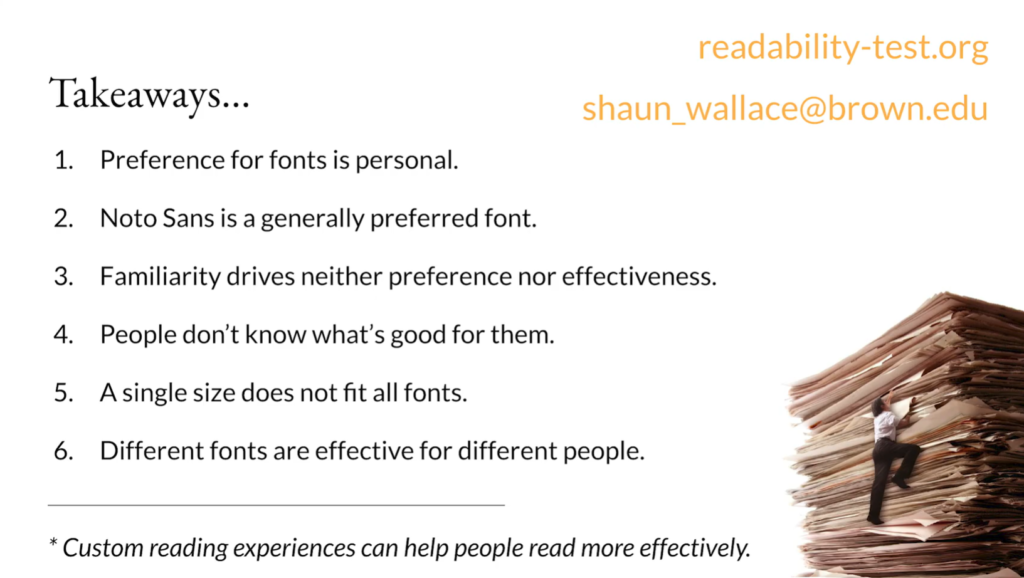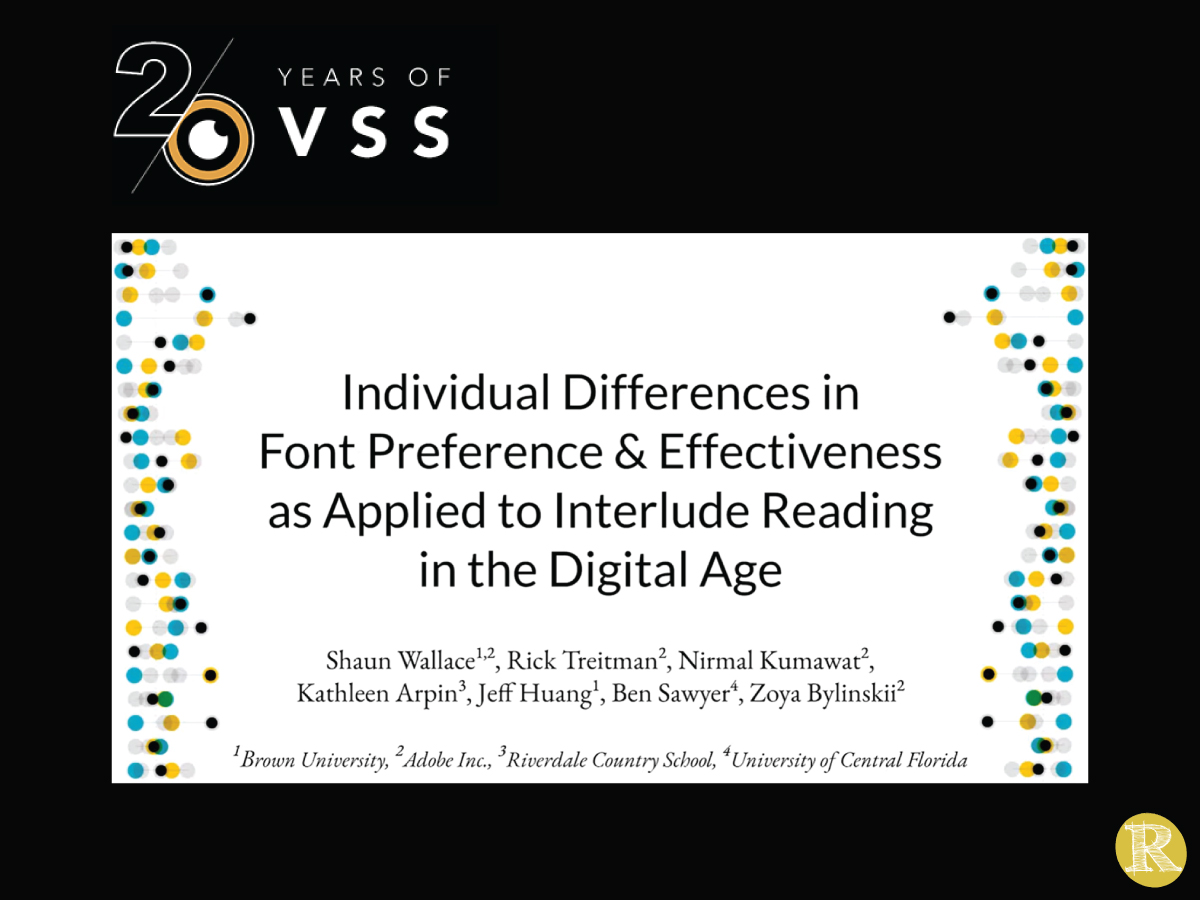Can we Accelerate Adult Reading?
At the June 2020 virtual Vision Science Society conference, Shaun Wallace presented the results of a collaboration between Brown University, Adobe, and the University of Central Florida. The team studied the impact of fonts on reading effectiveness with the goal of investigating individuation compared to the universality of fonts for reading.
In summary, digital documents are a technology that increasingly gives readers the power to customize what they read, in contrast to the inflexible written page. Changes as simple as a font dramatically accelerate reading without impact to comprehension, in this large-scale study of 386 crowdsourced adults reading short passages. However, an individual’s preferred fonts, which 80% believed would be their best, were only optimal 18% of the time, while optimal fonts provided benefits that reached an estimated 10 pages per hour. The coming challenge, therefore, is of matching readers with the customization that can provide them instant, effortless improvements to reading.
“One font does not rule them all. There’s no single font that will increase speed on average.”
Shaun Wallace
Brown University
In addition to their key takeaways, the research team concluded that “customized reading experiences can help people read more effectively.” They found that readers of all competency levels (fastest, average, and slowest) can read faster with the right font. Lastly, they point out that technology today can now accelerate the opportunity for readers to improve their reading experience and performance.
“Readers of all ability levels can read faster with the right font.”
Shaun Wallace
Brown University
Learn More
Video Presentation
Key Takeaways

Individual Differences in Font Preference & Effectiveness as Applied to Interlude Reading in the Digital Age
Shaun Wallace, Rick Treitman, Nirmal Kumawat, Kathleen Arpin, Jeff Huang, Ben Sawyer, Zoya Bylinskii
Vision Science Society Conference, 2020
ABSTRACT
In the age of pervasive reading on digital devices, incredible opportunities for customized interfaces abound. We consider how personalizing body text font can improve reading outcomes for adult readers. We present results of large-scale Interlude Reading experiments run on 386 crowdsourced participants, whereby we tested 16 body text fonts and measured impacts on font preference and reading speed. We define “Interlude Reading,” nestled between glanceable and long-form reading, as the form of reading that occurs in short interludes and is common in the mobile context. Our studies controlled for participants’ interest and familiarity with reading passages, familiarity with font families, and font size – via a perceptually-based font size normalization technique. While past work has considered how these factors affect reading in isolation, we present the first study that combines these factors under a single experimental methodology. First, our results show that normalizing a font’s size affects reading speed and font preferences. Second, familiarity with a font predicts neither preference nor effectiveness of a font. Third, people do not know what is good for them: despite 80% of people believing their most preferred font would be their most effective for reading, this was only true 18% of the time. Fourth, and most surprisingly, a simple change in font yielded a reading speed gain of 38 words per minute on average, and 93 WPM for our top quartile of participants (equivalent to eight pages an hour) while comprehension remained similarly high. With these results, we put forward (1) a methodology for running large-scale controlled reading studies, (2) a computational toolkit of crowdsourcing experiments, and (3) a list of concrete recommendations about favorable and effective fonts, and font normalization strategies. Moreover, the potential impacts on individual reading efficacy highlighted here demonstrate a need to further exploit the personalization of text formats.
Key words: Object Recognition, Learning, deep neural networks
ABOUT Shaun Wallace: Shaun Wallace is a Ph.D. candidate at Brown University and a researcher with a focus on HCI and Big Data systems. Visit Shaun’s website
ABOUT VSS: The Vision Sciences Society is a nonprofit membership organization of scientists who are interested in the functional aspects of vision. VSS was founded in 2001 with the main purpose of holding an annual meeting that brings together in one forum scientists from the broad range of disciplines that contribute to vision science, including visual psychophysics, neuroscience, computational vision, and cognitive psychology. The scientific content of the meetings reflects the breadth of topics in modern vision science, from visual coding to perception, recognition, and the visual control of action, as well as the recent development of new methodologies from cognitive psychology, computer vision, and neuroimaging.




